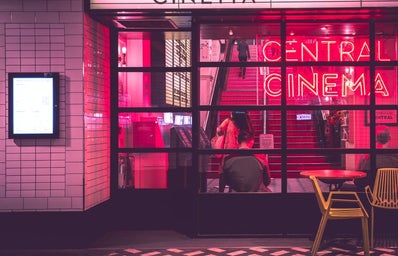Late one Thursday, the film Moxie came up on my Netflix content feed and I was curious as I watched the trailer. The trailer that debuted on Netflix did a better job of making it seem like this would be a titular film breaking the mold, yet it actually misses the mark. In the trailer, all you see is the new girl, who is an Afro-Latina character named Lucy, who talks about why The Great Gatsby shouldn’t be taught because of the message it portrays only to be rudely cut off by a White-male student named Mitchell, who is your stereotypical jock character.
I didn’t know what to expect when I saw this film. From the trailer, I hit watch since I was excited at the prospect of a story about feminism surrounding Lucy’s character because from the look of the trailer it did not seem to fixate on her background. I thought to myself, Finally a story of feminism told through a woman of color that doesn’t fixate on her identity all the time. My hope was short-lived and I felt let down when I started watching and realized it wasn’t about Lucy’s story arc at all and rather focused on Vivian, the White character who felt inspired by her.
The film is based on a book written by Jennifer Mathieu. Here’s a quick synopsis that Netflix missed a bit: a White girl named Vivian who has trouble answering a college essay question decides to co-opt feminism as her passion creating the zine ‘Moxie,’ anonymously, as a way for girls to take a stand against sexism and harassment. Now there isn’t anything inherently wrong with this story, because we want young girls (and boys) at the forefront taking a stance against the system of patriarchy. What I have a problem with is centering a White character’s interiority yet again in storytelling. The film tried its best to make it seem like they have a diverse cast of characters, including girls of color, a disabled character, and a transgender character. While they don’t directly use tropes, these characters aren’t fully formed in writing either which is just as bad. These diversity tactics have proven yet again to be in the background of Vivian’s character arc.
To start off, Vivian takes a lot of inspiration from her mother (played by Amy Poehler) who was active in the Riot Grrrl Movement. Vivian begins learning about Bikini Kill and Kathleen Hannah’s involvement in the Riot Grrrl movement. Punk and feminism have been associated with one another for a very long time, however, it would seem the writer didn’t research it, since Kathleen Hannah did not start Riot Grrl. X-Ray Spex frontwoman, Poly Styrene, was the first Black woman to start the punk-DIY scene in London, where Bikini Kill took inspiration from and she was only 15 years old. Ramdasha Bikceem, a Black woman who was friends with Bikini Kill, actually spearheaded the idea of zines and made them herself first but never received credit. She also began her own series of zines called GUNK.
As with most movements started by Black women, it became twisted and excluded women of color. Immediately when I recognized they weren’t delving into the Riot Grrl movement history, it was obvious the film wouldn’t work if it praises Kathleen Hannah and ‘Rebel Girl’ without considering how she was not intersectional in her “work.” In her documentary, The Punk Singer Hannah herself has said she was the only one doing this work with Bikini Kill in 1990. In reality, Poly Styrene began the work in 1976, 14 years before Bikini Kill existed and at the age of 15. Hannah’s White feminism thinking in this regard raises questions on whether this should be the foundation of Vivian’s intentions as a character. Now, granted her character is only 16 and may not be as aware, but I would expect a writer to meet the bare minimum of awareness on this subject.
Vivian is the anonymous author who conjured up this movement and began generating conversation about sexism, blatant disrespect of women, and generally hating on men. Every now and then there are one-liners from the characters used as diversity tokens. For example, there is a moment where CJ speaks about being dissuaded from auditioning for the school musical because people refuse to use her new name. This could have been a defining moment that set this film apart from other high school films, but instead, it is glossed over and there is only one solo scene with CJ auditioning and nothing else.
The other women of color also briefly mention how they deal with both racism and misogyny. Had they chosen to portray Lucy’s interiority or life, this film would have been way different and been able to say something with originality. How many more man-hating White feminist stories would you like to hear? Lucy’s story would have been different than Vivian’s, and quite frankly I’m interested. However, by again choosing to center the narrative around a White girl, you get the same hero story arc with minor exceptions. Vivian’s story as a creator should be heard, but what about Lucy’s, or CJ’s, or the other student athletes’? These last-ditch diversity efforts do not fool me and I look forward to the day films about feminism are actively intersectional, because this is not true Moxie.
Sources:
Alternatives to the Alternative: The Black Riot Grrrls Ignored


